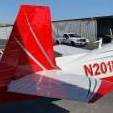How much do you trust your Garmin 530?
-
Members Online
- LANCECASPER
- DanM20C
- Ragsf15e
- McMooney
- Andy95W
- SLOWR426
- Rick Junkin
- Laura Storke
- Guy123
- PT20J
- 802flyer
- KB4
- EricJ
- ElkoRandy20J
- MB65E
- SkyBound
- tkubat06
- CAlstrom
- Jim Peace
- Glen Davis
- Rwsavory
- mgtrevor
- Max3293F
- gacoon
- larryb
- Culver LFA
- Jetpilot86
- LOCOLJ
- FlyingCanuck
- Lptoro
- Crawfish
- Hank
- pkellercfii
- Mooney-Shiner
- BrentS
- Pierre07
- redbaron1982
- Ned Gravel


Recommended Posts
Join the conversation
You can post now and register later. If you have an account, sign in now to post with your account.